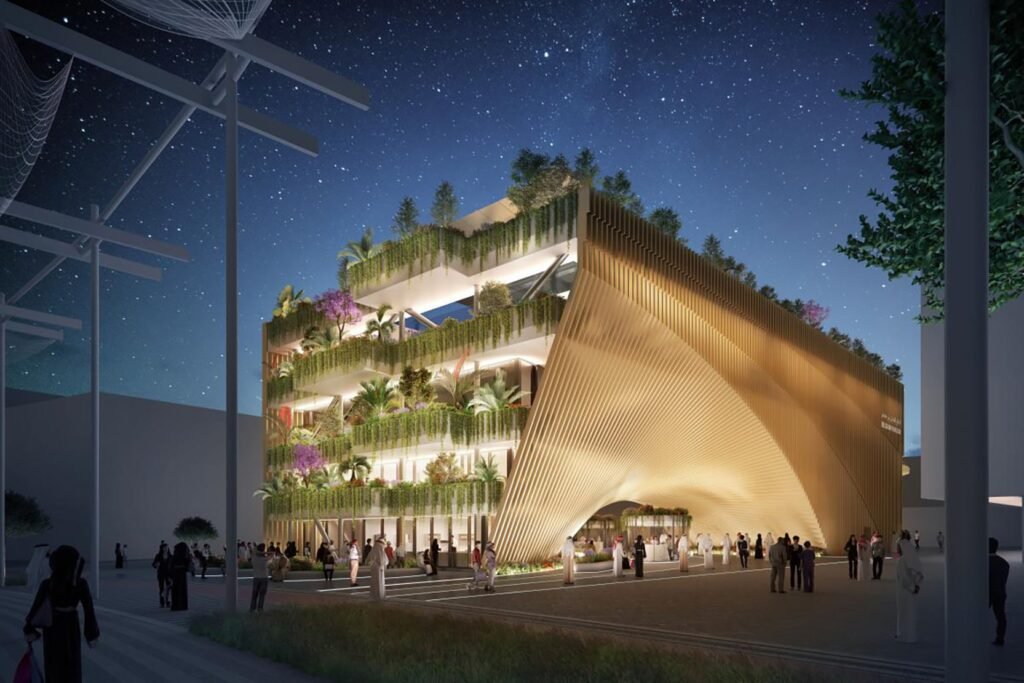The UAE has long been known for its oil-rich economy and its spectacular modern developments. However, in recent years, the country has made significant strides in the field of sustainable energy, shifting focus to renewable sources like solar energy, wind power, and nuclear energy. This move not only aims to reduce its reliance on fossil fuels but also positions the UAE as a leader in green energy.
In this article, we will explore the UAE’s sustainable energy projects, their goals, and how these projects are reshaping the country’s energy landscape for a greener, more sustainable future.

1. UAE’s Vision for Sustainable Energy: The Green Strategy
In 2017, the UAE launched its Energy Strategy 2050, which serves as the backbone for its commitment to sustainability. The strategy aims to increase the share of clean energy in the country’s energy mix to 50% by 2050, while also reducing the carbon footprint of power generation by 70%. It’s a bold vision that reflects the country’s dedication to sustainable development and environmental responsibility.

The Energy Strategy 2050 focuses on a diverse range of energy sources, including solar power, nuclear energy, and natural gas. The plan not only helps address the country’s growing energy demands but also aligns with global efforts to tackle climate change and reduce greenhouse gas emissions.
2. The Mohammed bin Rashid Al Maktoum Solar Park: A Landmark Solar Project
One of the most ambitious projects in the UAE’s sustainable energy journey is the Mohammed bin Rashid Al Maktoum Solar Park in Dubai. Once completed, this solar park will be the largest single-site solar park in the world, with a capacity of 5,000 megawatts (MW) by 2030.

The project was launched in 2012 and has since been a driving force in Dubai’s goal to become a global leader in renewable energy. The solar park is built in stages, with the first phase already generating 13 MW of power. As each phase is completed, it will contribute more clean energy to the national grid, helping reduce reliance on traditional fossil fuels.
The solar park uses a combination of photovoltaic (PV) and concentrated solar power (CSP) technologies, making it one of the most technologically advanced renewable energy projects in the world. The UAE government has invested heavily in this project, which not only contributes to a greener future but also creates job opportunities and boosts the economy.
3. Nuclear Energy: Barakah Nuclear Power Plant
Another major part of the UAE’s push for sustainable energy is the development of nuclear energy. The UAE is the first country in the Arabian Gulf to build a nuclear power plant. The Barakah Nuclear Power Plant, located in the western region of Abu Dhabi, is expected to provide up to 25% of the country’s electricity needs once all its units are operational.
The Barakah plant is a milestone for the UAE, which has committed to a carbon-free energy future. It will be one of the world’s most advanced nuclear power plants, using cutting-edge technology to generate clean energy. The plant consists of four reactors, with the first one already connected to the grid and producing electricity.
The development of nuclear power aligns with the UAE’s Energy Strategy 2050 by diversifying its energy sources and reducing its dependence on oil and gas. The UAE also partnered with international experts to ensure that the project is safe, sustainable, and meets the highest global standards.
4. Wind Energy: A Renewable Energy Source with Great Potential
Although solar energy has taken the spotlight in the UAE, wind energy is also being explored as part of the country’s energy mix. In 2019, the UAE announced the launch of its first offshore wind farm project in collaboration with international partners. The project, located off the coast of Abu Dhabi, aims to harness the power of wind to generate clean electricity.
Wind energy is still in the early stages of development in the UAE, but it holds great potential. The country has a high level of wind resources, particularly along its coastlines, which could be utilized to produce renewable energy. If successful, wind energy could complement solar power and further enhance the UAE’s clean energy capabilities.
5. Waste-to-Energy: Turning Trash into Power
Another innovative project that the UAE is working on is the waste-to-energy initiative. Waste-to-energy plants convert household waste, industrial waste, and other types of garbage into electricity through a process of incineration. The UAE has already started developing its waste-to-energy capabilities, with plans to build several such plants in the coming years.
The first of these plants, The Waste-to-Energy Plant in Dubai, opened in 2020. It is expected to process 1.9 million tons of waste per year and produce enough electricity to power 135,000 homes. This project aligns with the UAE’s goal to reduce landfill waste and create cleaner energy at the same time.
Waste-to-energy plants also help reduce the environmental impact of waste disposal, as they produce fewer emissions compared to traditional incineration methods. The UAE aims to divert 75% of waste from landfills by 2025, and the development of waste-to-energy plants will play a key role in achieving this target.
6. The Role of Green Buildings in the UAE’s Energy Future
Sustainable energy is not just about generating clean power—it’s also about using energy efficiently. One of the ways the UAE is addressing energy efficiency is through the development of green buildings. These buildings are designed to minimize energy consumption, reduce water usage, and lower carbon emissions.
In Dubai, the Dubai Green Building Regulations and Specifications require all new buildings to meet certain energy-efficient standards. This includes the use of energy-saving lighting, solar panels, efficient HVAC systems, and high-performance insulation. The regulations are part of Dubai’s broader effort to reduce energy consumption and increase the sustainability of urban development.
The government also offers incentives for developers and property owners to retrofit existing buildings to meet green standards. These efforts are essential in reducing the overall energy demand of the country, making the UAE’s built environment more sustainable.
7. Solar-Powered Transportation: Reducing the Carbon Footprint
In addition to renewable energy generation, the UAE is also exploring the use of clean energy in the transportation sector. Electric vehicles (EVs) are becoming increasingly popular in the UAE, and the government is making efforts to encourage their adoption.
Dubai’s Roads and Transport Authority (RTA) has set ambitious goals to increase the number of electric vehicles on the road and reduce carbon emissions from transportation. By 2030, the RTA plans to have 25% of all vehicles in the city run on clean energy. To support this, Dubai has built a growing network of EV charging stations to make it easier for residents to charge their electric cars.
Moreover, Dubai is also looking to solar-powered public transport systems. In 2020, Dubai launched its first solar-powered bus, which is part of the city’s broader vision to transition to greener modes of transportation.
8. Challenges and Future Prospects
While the UAE has made impressive strides in the development of sustainable energy projects, there are still challenges to overcome. These include the high cost of renewable energy technologies, the need for continued investment in research and development, and the integration of renewable energy sources into the existing grid.
Despite these challenges, the UAE remains committed to its goal of becoming a global leader in sustainable energy. The country’s ongoing investments in renewable energy, energy efficiency, and green technologies are helping to pave the way for a cleaner, greener future. As the world continues to confront the effects of climate change, the UAE’s efforts in sustainable energy are an important step in the right direction.
Conclusion: A Green Future for the UAE
The UAE’s sustainable energy projects are setting the stage for a more environmentally friendly and energy-efficient future. From solar and nuclear power to wind energy and waste-to-energy initiatives, the UAE is embracing a diverse mix of sustainable solutions. These efforts are not only helping the country reduce its carbon footprint but also positioning it as a global leader in clean energy.
As the UAE continues to invest in sustainable technologies, it will likely inspire other nations to follow suit, leading to a greener, more sustainable world. The UAE’s commitment to a cleaner, brighter future demonstrates that it is possible to build a modern, thriving economy while still protecting the environment.
Also read: Is Dubai’s Real Estate Market Set for a Boom in 2025? Find Out Now!














